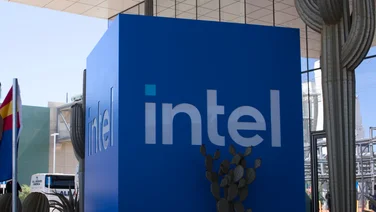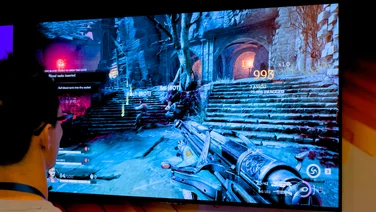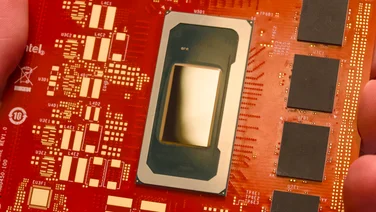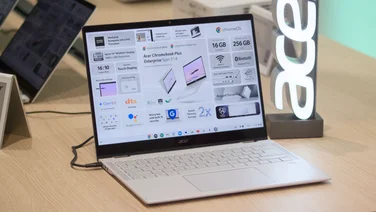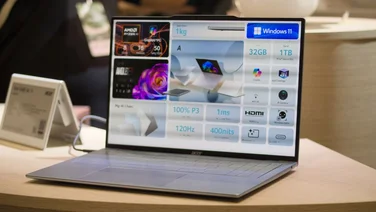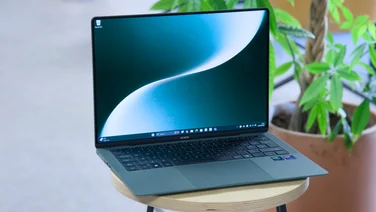To help us provide you with free impartial advice, we may earn a commission if you buy through links on our site. Learn more
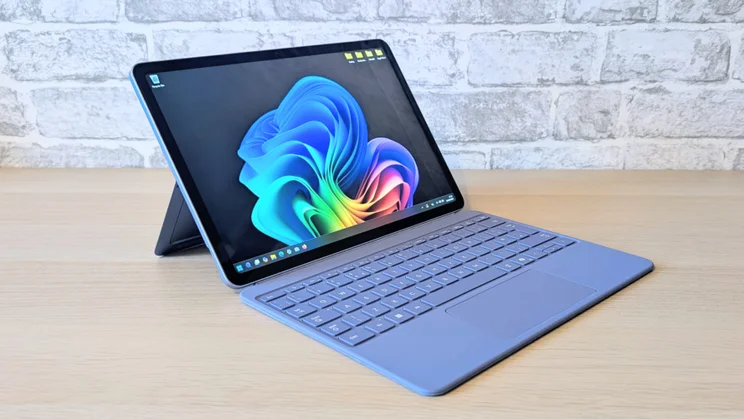
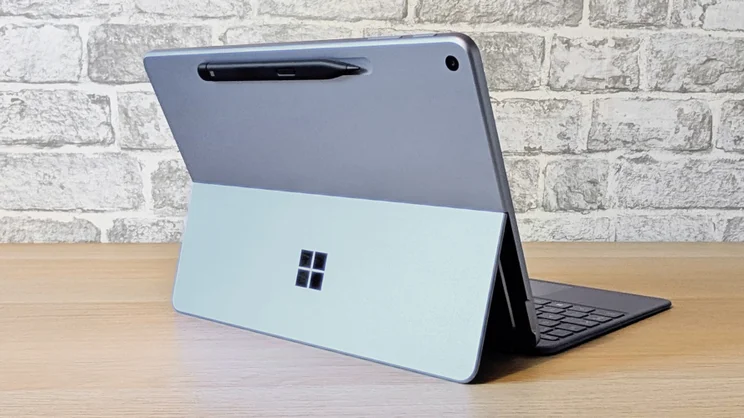
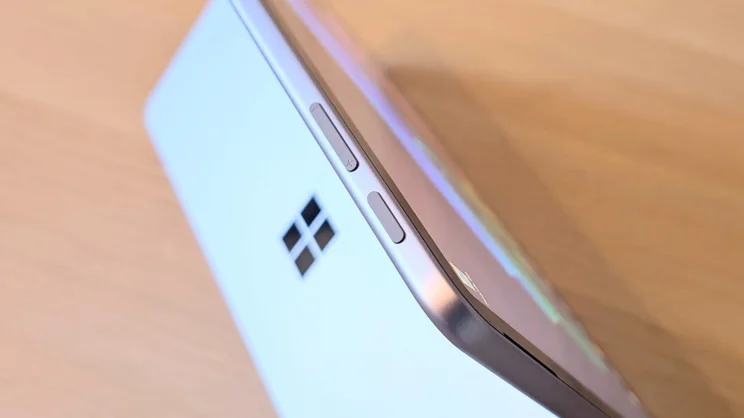
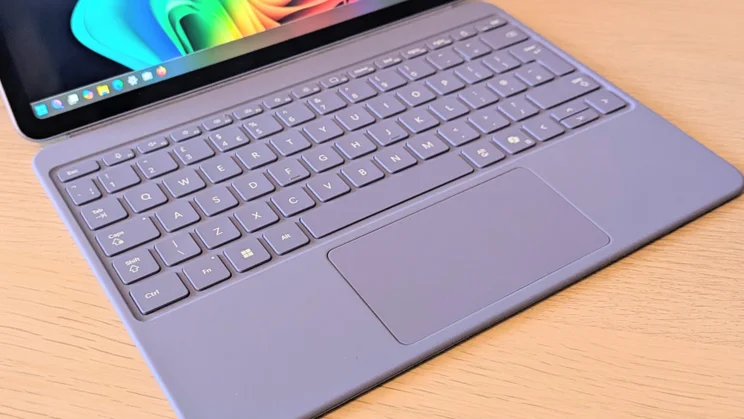
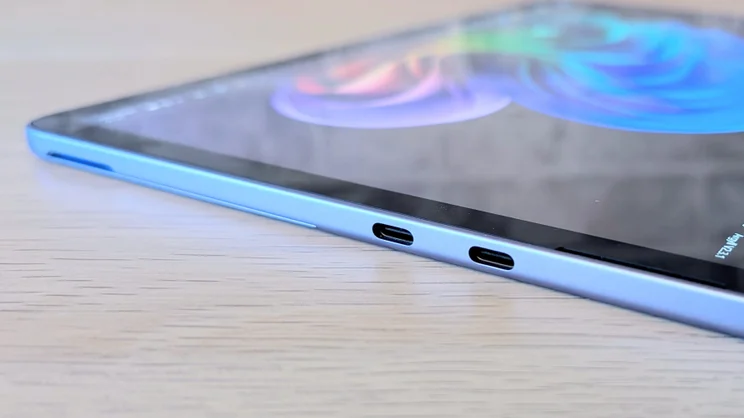
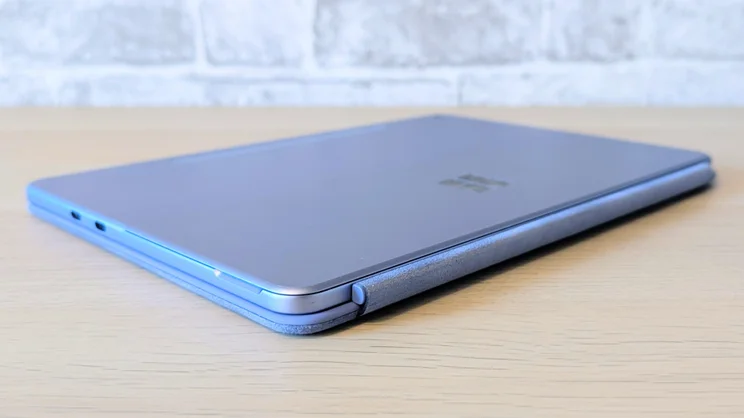
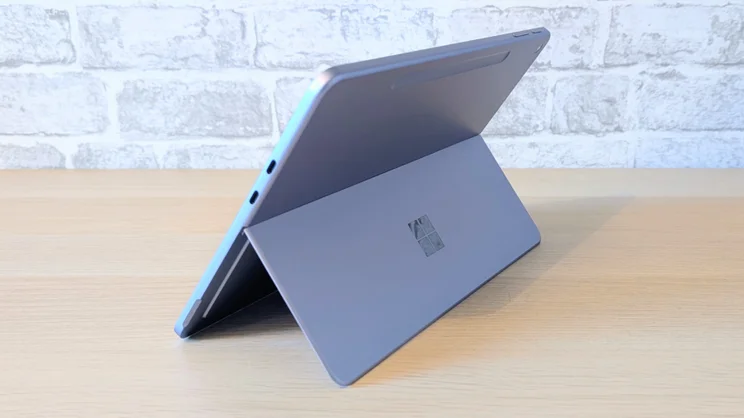
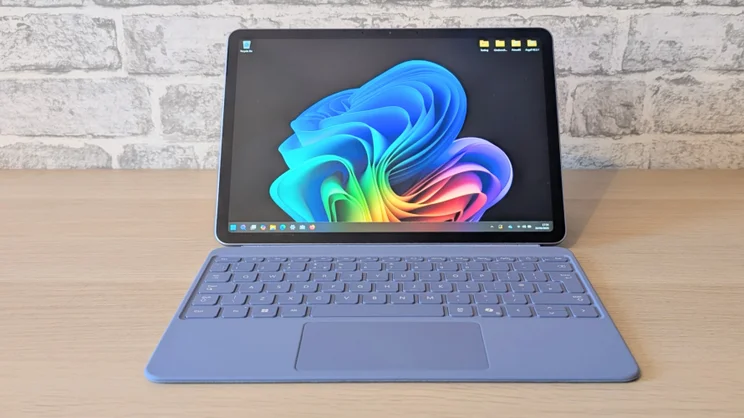
- Excellent battery life
- Impressive sound system
- Top-notch build quality
- Keyboard and pen is £250
- Sluggish UFS storage
- No 3.5mm audio jack
Lennon and McCartney, Laurel and Hardy, pie and mash, Procter and Gamble: Some partnerships are simply meant to be. To the list of marriages ordained by the divine, we can now add Windows tablets – the Microsoft Surface Pro 12 in the case of this review – and Qualcomm chipsets.
Make no mistake, sticking a lower-end Snapdragon X chipset into a more-affordable Windows tablet has finally resulted in a gadget that you should genuinely consider as an alternative to an iPad, a good Android tablet or a compact laptop.
Microsoft Surface Pro 12-inch: What you need to know
Microsoft’s new Snapdragon-powered Surface 12 Pro is the smallest, lightest and cheapest member of the Surface lineup. It replaces the Surface 11 Pro and, in some ways, is a step back in terms of specification, but it’s also cheaper. That seems like a smart move by Microsoft.
By starting the new range at £799, it’s pitching the new slate as competition for general-use tablets like the iPad Air range and the numerous better-quality Android tablets from the likes of Samsung, Honor, Xiaomi/Redmi, and OnePlus, as well as more expensive “Pro” tablets like the iPad Pro and Samsung Galaxy Tab S11 Ultra.
The Surface Pro 12, then, is aimed at people who want a usable tablet for casual use, but also a competent Windows device for more serious jobs. That may long have been an ambition for Microsoft, but with the new Surface 12 Pro, it has finally achieved it.








Price and competition
The only options you’re presented with when buying a Surface Pro 12 relate to colour and storage. The 256GB model will set you back £799, which is a lot less than the £1,049 Microsoft is currently asking for the base Surface Pro 13 (£1,029). The 512GB model is still reasonable at £899, and the 1TB model is £1,049.
Don’t forget, though, like most productivity tablets, the keyboard and stylus are “optional” extras. The Pro 12 keyboard will set you back £149, while the keyboard and pen package is £249. If you want the Surface USB charger, that will be another £50. That means if you want the 512GB tablet, keyboard, pen and charger, which is what I was sent for this test, you’ll need to find £1,200.
Unlike the larger Surface Pro 13, there are no display options, and no option to add cellular connectivity. The platinum finish is available with all three storage options, but the violet and ocean (grey) options are limited to the 512GB model.
Naturally, the new Surface tablet is up against some serious competition.








The ultimate in productivity Android tablets is Samsung’s mighty 14.6in Galaxy Tab S11 Ultra. The huge OLED screen is glorious, and performance and battery life both impress. Cheap, however, it is not.
Apple’s 13in iPad Pro is another large-screen tablet designed to act as a laptop replacement as well as a media consumption slab. A superb display and wide selection of tablet-optimised apps make the iPad Pro a potent tool, but like the Tab S11 Ultra, it’s expensive.
We’re not convinced that Microsoft has got the price right on the Surface 13 Laptop, but there’s no denying the essential underlying quality of Redmond’s dinkiest touchscreen machine, and it delivers truly epic battery life. It’s more than the sum of its parts and unlikely to disappoint anyone after a compact Windows machine.
If all you want is a tablet for Netflix, YouTube, the Kindle app and suchlike, the Android-powered OnePlus Pad 3 is our top recommendation. The entry-level model costs less than £500, and it has no weak spots worth mentioning.
The doyen of compact laptops, the M4 Apple MacBook Air, is also a great buy if you want a small, light but highly capable device. You can grab the base 13.6in model on Amazon for £899, so it’s quite the value choice if you can live with a 256GB SSD and screen you can’t poke.
Design and features
Physically, the Surface Pro 12 is a basic and rather anonymous tablet with rounded edges and a back made from 100% recycled aluminium alloy with a built-in kickstand.
On the top left edge, you’ll find power and volume controls, while on the right edge are two 10Gbits/sec USB-C ports and both support DP AltMode video output. On the bottom edge, there’s a row of pogo pin contacts to connect to the keyboard.
I’d have preferred to see a brace of USB-C 4 spec ports, but at least the wireless side of things is bang up to date with Wi-Fi 7 and Bluetooth 5.4 both present and correct.








There are a couple of things missing, though. Gone are the Surface Pro 11’s magnetic Surface Connect port and the small access hatch in the back to access the storage card. Given the Pro 11 lacked an audio jack, it came as no surprise to find that the Pro 12 also lacks one.
Is the missing 3.5mm audio jack a deal-breaker? In an era when we all have Bluetooth earphones to use with our smartphones, I’d argue not; I can’t recall the last time I used my wired Sennheisers with anything other than my Arcam amp.
The tablet part of the Surface Pro 12 weighs 650g, though the keyboard and pen add another 340g. Few Windows devices can match that lack of heft other than the Asus Zenbook A14 and the recently reviewed Honor MagicBook Art 14.








For context, at 580g, the 13in iPad Pro is lighter, and at 5.1mm compared to the Surface Pro 13’s 7.8mm, it’s thinner too. I’d argue those differences are inconsequential, though, and anyway, the iPad doesn’t have a built-in kickstand, which is obviously going to add to the weight and thickness.
The design features of the Surface 12 Pro that are really worth focusing on are all at the back and bottom. The magnets in the base of the tablet that keep the keyboard in place are ferociously strong. You can pick the whole assembly up by the keyboard and wave it about without the two parts coming adrift.
The kickstand is a typical Surface affair that runs the full width of the tablet and can be adjusted to any position between near-vertical and near-flat. The hinge is smooth and quite stiff, so everything stays in place even if you move or nudge it.








Equally as important, when not in use, the stand folds perfectly flush, so there are no issues with it snagging or flapping about when you are using the Surface Pro 12 as a tablet or eReader.
Sadly, Microsoft has done away with the eminently strokable Alcantra finish of the Surface Pro 13’s keyboard, replacing it instead with a smooth, soft-touch rubberised finish. That said, the Pro 13 keyboard is £30 more, so you get what you pay for.
To prevent loss of the rather expensive but also fine Surface Slim Pen, there’s a shallow magnetic trough in the back of the tablet that also keeps the pen charged through the magic of inductive charging. One balance I prefer this layout to the Surface Pro 13 arrangement of having the pen trough at the top of the keyboard, simply because you don’t need the keyboard to use it.
Keyboard, touchpad and webcam
Microsoft’s detachable Surface keyboards have long been a byword for excellence, and the new bespoke Surface Pro 12 keyboard is no exception.
The typing action may be rather shallow, but it’s crisp, positive and well-damped. There’s no option to increase the angle of the deck, but I didn’t find that getting in the way of my typing speed or enjoyment. The cherry on the cake is a two-stage backlight.








At 105 x 50mm, the touchpad is a little on the small side, but it works beautifully, and the smooth surface is very pleasant to the touch. Given how thin the keyboard is, the feel of the mechanical click-action is spot on, and it’s quiet.
The webcam is also a typically high-quality Microsoft device. Capable of capturing bright, colourful FullHD video with all the expected Microsoft Studio effects, the camera array also supports Windows Hello facial recognition.
The 10MP rear camera is, by comparison, a very basic and utilitarian affair that can’t hold a candle to the average mid-range smartphone camera and lacks any sort of flash. It can capture video at 4K and 30fps and 10MP still images, but that’s really all there is to say about it.
Display and audio quality
The new Surface Pro 12 is built around a 12in 3:2 2,196 x 1,464 IPS display with a pixel density of 220dpi. That can’t match the 13in iPad Pro’s 264dpi, but to the naked eye the difference is beyond discernment.
When measured, I found peak brightness to be a healthy 430cd/m2 and with sRGB colour gamut coverage at 94.1%. It’s also usefully accurate when measured against the sRGB colour standard with a Delta E variance of just 1.3. Add a 90Hz refresh rate into the mix and I’d describe it as a very good, if not great display.
Would I have preferred a wide-gamut, HDR-capable OLED display like that used in the Surface Pro 11 and available on the Pro 13? Yes. Is that a reason not to buy the cheaper Pro 12? No.








Microsoft describes the screen glass as “strengthened” without giving away any brand names. Worrying at a corner with my car keys had no effect whatsoever, so it should prove just as robust and long-lived as your average Gorilla Glass-covered phone screen.
If the display is good, the sound system is excellent. Against a pink noise source at a 1m distance, my sound meter registered a room-filling 78.2 dBA while the soundscape was warm and detailed with plenty of lower frequency reproduction. The Surface Pro 12 is one of the best-sounding tablets on the market, regardless of price, size or operating system.
Performance and battery life
Buried inside the Surface Pro 12 is an octa-core Qualcomm Snapdragon X Plus X1P-42-100 CPU, the same as used in the Surface 13 Laptop, which delivers a perfect combination of performance and efficiency.
General performance is every bit as sprightly as that of the other Snapdragon-powered laptops I’ve tested, like the Surface 13 Laptop and Lenovo IdeaPad Slim 3x.
On paper, the old Surface 11 Pro, which used a more potent 12-core Snapdragon X Elite X1E-80-100 processor, was more powerful, but the difference isn’t something you’ll notice in everyday use.
Graphics performance continues to be a bit of a letdown, now that both Intel and AMD have moved the game on with their latest integrated GPUs, but let’s be honest you don’t buy a £799 Windows machine to run CAD software or play Doom: Dark Ages. For all other jobs, the Adreno GPU is more than good enough.
The Snappy SoC also packs a 45 TOPS NPU, which means the Surface Pro 12 carries Microsoft’s CoPilot+ stamp of approval. That means you can run all the Windows local AI tools like live captions, generative fill in Paint and Recall screen capture.
Whatever your opinion of these AI tools, we’re only going to see more of them being added to Windows as the months and years tick by, so it’s good that the Surface 12 Pro is future-proofed on this count.
Even though the Surface Pro 12 is passively cooled, stress-testing revealed no thermal issues; the CPU and GPU ran at near-100% utilisation for hours on end without the device getting overly warm to the touch.
But storage performance isn’t quite so impressive. Like the Surface 13 Laptop, the Surface Pro 12 uses UFS rather than SSD storage, so read and write speeds are not great. Average sequential read and write speeds of 2,270MB/sec and 1,400MB/sec are adequate for a device like this, but no more.
Traditionally, Windows tablets had always suffered when it came to battery life, but the Surface Pro 11 laid that problem to rest, and the new Pro 12 has moved the game on even further. In our battery run-down test, the new Surface slate ran for 19hrs 20mins. That’s a tremendous performance.
Granted, it still can’t match the Surface 13 Laptop’s near-24-hour runtime, but that has a 50Wh battery while the Pro 12 makes do with 38Wh. The Surface Pro 12 lasts longer than the basic iPad and OnePlus Pad 3, however, and it runs longer than the Samsung Galaxy Tab S11 Ultra and Apple’s M4 iPad Pro 13, too.
Microsoft Surface Pro 12-inch: Verdict
If all you want is something larger than your smartphone for watching Netflix or browsing the web, then Android tablets like the OnePlus Pad 3, or a basic iPad still makes more sense because they are cheaper and run an operating system designed for fingers. But if you want a device that can do basic tablet stuff and function as a grown-up laptop, then the new Surface Pro 12 is worth serious consideration.
The combination of strong performance, outstanding battery life, a superb sound system and a good if not great display for under £800 is a hard combination to ignore. Granted, the price gets a bit steep when you opt for the keyboard and pen package, but you will then have a tremendously useful, versatile and compact Windows device that is ideal for a multitude of uses.
By moving to a cheaper Snapdragon chipset, the Windows tablet has just gone from zero to hero. Who’d have thought it?
Microsoft Surface Pro 12-inch Specifications
| Processor | Qualcomm Snapdragon X Plus |
| RAM | 16GB |
| Additional memory slots | No |
| Max. memory | 16GB |
| Graphics adapter | Qualcomm Adreno |
| Graphics memory | Shared |
| Storage | 256GB |
| Screen size (in) | 12 |
| Screen resolution | 2196 x 1464 |
| Pixel density (PPI) | 220 |
| Screen type | IPS 90Hz |
| Touchscreen | Yes |
| Pointing devices | Touchpad |
| Optical drive | No |
| Memory card slot | No |
| 3.5mm audio jack | No |
| Graphics outputs | USB-C 3.2 Gen 2 DP AltMode |
| Other ports | USB-C 3.2 Gen 2 x 2 |
| Web Cam | 1080p |
| Speakers | Stereo |
| Wi-Fi | Wi-Fi 7 |
| Bluetooth | Bluetooth 5.4 |
| NFC | No |
| Dimensions, mm (WDH) | 274 x 190 x 8 |
| Weight (kg) – with keyboard where applicable | 686g |
| Battery size (Wh) | 38 |
| Operating system | Windows 11 Home |


